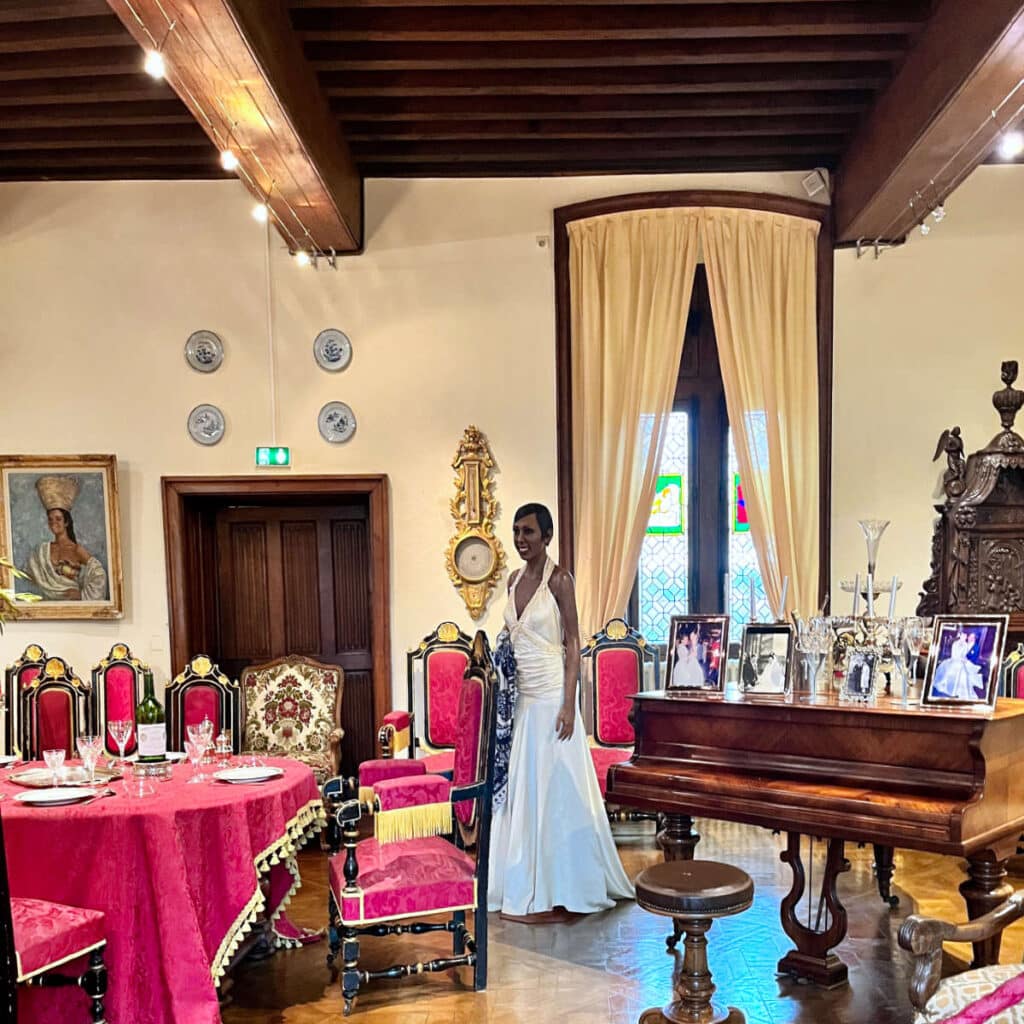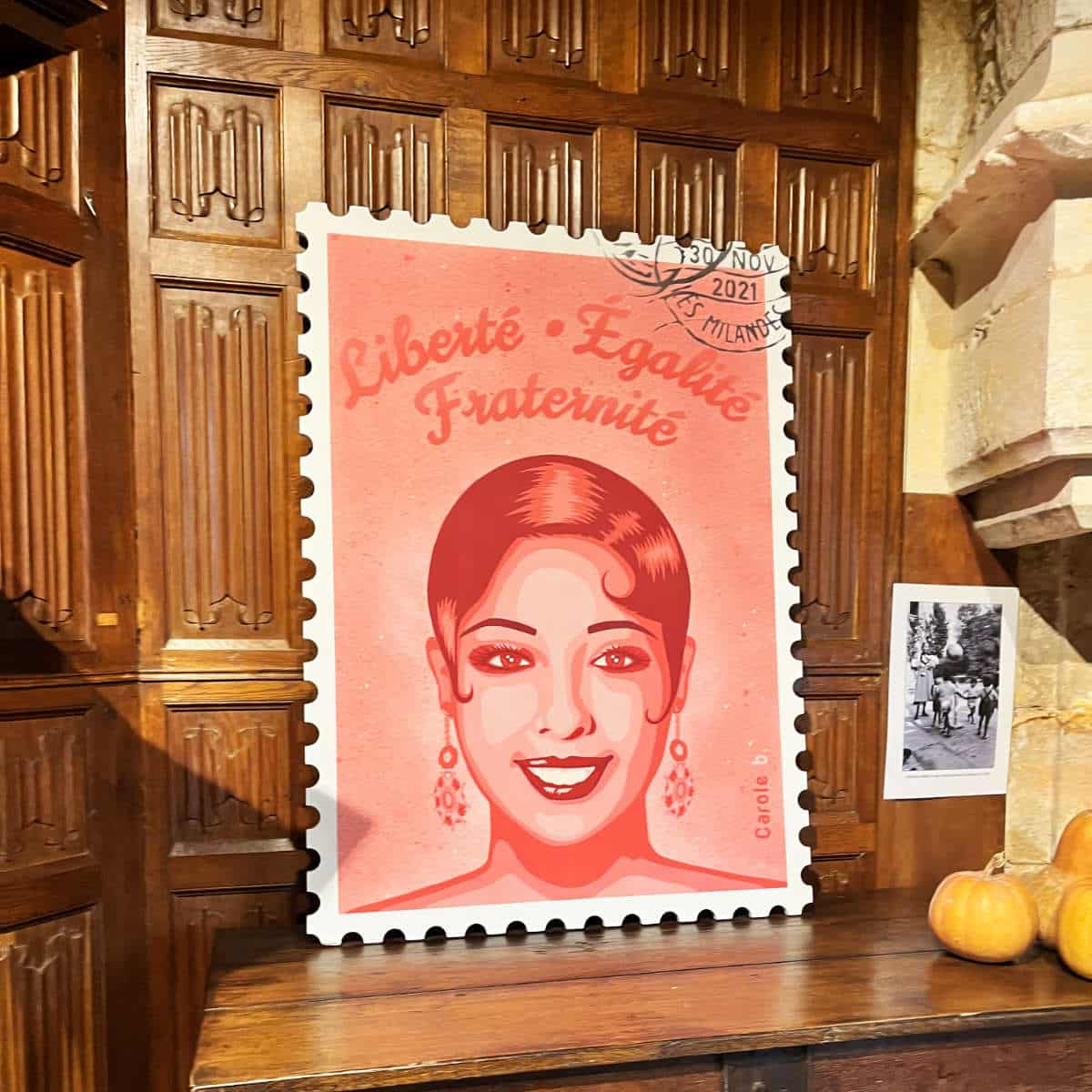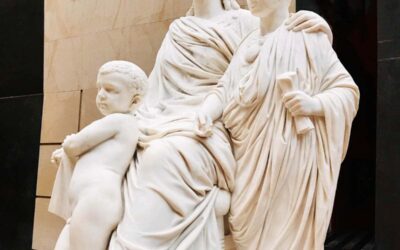In the 20th century, there was one extraordinary woman who combined a world of jazz, stardust, and human rights: Josephine Baker. She was a woman of mixed race at a time of segregation and discrimination.
But American Josephine Baker would take fate into her own hands, moving to France to become not only a star singer, but also a French icon. This incredible woman would become a resistance fighter and then civil rights activist, fighting for the causes she so passionately believed in.
So let’s explore the incredible life of Josephine Baker, and how she ended up in the Pantheon of France, shall we? Allons-y!

| Quick facts | |
|---|---|
| Real name: | Freda Josephine McDonald |
| Birth: | June 3, 1906 in St. Louis, Missouri, USA |
| Death: | April 12, 1975 at the age of 68 in Paris, France |
| Parents and siblings: | Daughter of a single mother named Carrie McDonald |
| Nationality: | American (renounced); French (1937–1975) |
| Marriage and kids: | Married 4 times, 12 adopted children |
| Famous for: | Singer and dancer, French resistance fighter |
1. She was born in 1906 in St. Louis, Missouri, USA.
Josephine Baker was born on June 3, 1906, in St. Louis, Missouri. Her real name was Freda Josephine McDonald. Her mother’s name was Carrie and her father was unknown.
Her mother Carrie was herself the adopted daughter of former slaves of African and Native American heritage, Richard and Elvira McDonald.
2. She grew up poor.
Josephine’s mother remarried and had more children but their situation was always unstable. Josephine worked several jobs as a child, including as a laundress and a server.
3. She started off in vaudeville.
At the age of 13, Josephine began her career as a show girl in vaudeville, and joining the chorus line. As the show productions toured across America, she eventually landed a spot in a Broadway production.
4. She married her 1st husband at 13, and her 2nd husband at 15.
In search of stability, Josephone Baker married a Pullman porter named Willie Wells in 1919 when she was only 13 years old.
The couple divorced soon after, and in 1921 at the age of 15 she married William Howard Baker. They divorced in 1925, but since she was singing and dancing under that surname, she kept the name Josephine Baker after the divorce.
She later married again, but continued to go by the surname Baker.
5. She moved to France at the age of 19.
Josephine’s journey to stardom took a crucial turn when she decided to follow her dreams to the City of Lights, Paris. As a person of mixed race, she was not getting the opportunities she wanted in the U.S.
I wanted to get far away from those who believed in cruelty, so then I went to France, a land of true freedom, democracy, equality and fraternity.
Famous quote about France by Josephine Baker
French society was more open, and Josephine hoped to make her mark here. Baker sailed to Paris in 1925, and opened on October 2 at Théâtre des Champs-Élysées.
6. She became the toast of Paris as the Queen of Jazz.
Josephine Baker became a sensation in Paris, stunning audiences with her provocative dances and infectious energy.

Her signature act, the “Banana Dance,” featuring her clad in a skirt made of artificial bananas, became iconic and synonymous with her name.
With a charismatic stage presence, Baker was soon a star. Her song “Paris, Paris, Paris”, became one of the most popular songs ever.
7. She was married 4 times.
Josephine Baker married 4 times:
- Willie Wells (1919 – 1919)
- William Baker (1921 – 1925)
- Jean Lion (1937 – 1940)
- Jo Bouillon (1947 – 1961)
She was also believed to be in several relationships with men and women.
8. She became a French citizen.
In 1937, Josephine Baker decided to become a French citizen. She became a French national after her marriage to French industrialist Jean Lion in 1937, and renounced her American citizenship.
9. During World War II she joined the French Resistance.
As World War II unfolded, Josephine Baker was recruited into the French Resistance. During the Nazi occupation of France, Baker used her status as a performer to travel and gather intelligence.

She initially moved from Paris to her home in Château de Milandes in the Dordogne, hiding resistance fighters and helping people get visas to escape.
She also traveled all over Europe, carrying intelligence paperwork and doing whatever she could to help. Her efforts didn’t go unnoticed, and she was awarded the Croix de Guerre and named a Chevalier of the Légion d’honneur by French General Charles de Gaulle for her bravery.
10. She adopted 12 children, calling them her Rainbow Tribe.
Baker adopted 12 children from different ethnic backgrounds and referred to them as her “Rainbow Tribe,” as a symbol of her commitment to racial harmony.
Many of her children continue their mother’s heritage and good works today.

11. She was active in the American civil rights movement.
In the 1950s, as the civil rights movement was gaining steam, she made several trips to the United States. Baker refused to perform for segregated audiences and spoke out against the racism she encountered, leveraging her fame to challenge the status quo.
During the 1963 March on Washington, where Dr. Martin Luther King Jr. delivered his iconic “I Have a Dream” speech, Josephine Baker was the only official female speaker.
After King’s assassination, his wife Coretta Scott King asked Baker to take her husband’s place as leader of the U.S. Civil Rights Movement. After thinking it over, Baker declined saying her children were “too young to lose their mother”.
12. She was forced to declare bankruptcy.
While Baker’s professional life was stable, her personal life was a rollercoaster. Despite her attempts at creating a harmonious family, financial difficulties mounted. Her beloved Château des Milandes was seized and sold at auction.
13. Princess Grace Kelly was a dear friend.
When Baker was near financial ruin, Grace Kelly who was by then the princess consort of Monaco, offered her a villa and financial assistance.
Princess Grace would continue to offer Josephine her support and help for the rest of her life.
14. She died at the age of 68.
Tragically, Josephine Baker died on April 12, 1975, at the age of 68 having suffered a cerebral hemorrhage. Given her wartime heroics, she receved full French military honors at her funeral.
With more than 20,000 mourners, a family service was held at Saint-Charles Church in Monte Carlo, and she was interred at Monaco‘s Cimetière de Monaco.
15. She was honored on stamps in France and America.
After her death, many commemorative stamps were issued featuring Baker in both the France and the United States. Place Joséphine Baker in the Montparnasse area of Paris was named in her honor, and she was also been inducted into the St. Louis Walk of Fame.
16. She was inducted into the Pantheon.
In recognition of her unparalleled contributions to France, Josephine Baker was posthumously inducted into the Pantheon in Paris in 2021, after two years of consultation with her family.

The Pantheon, a symbol of France’s commitment to honoring its distinguished citizens, where other great names like Victor Hugo, Alexandre Dumas and Marie Curie are honored.
Baker has become an icon in France, a testament to her lasting impact in the arts, the fight for justice, and the human spirit.

If you enjoyed that article, you may like to read more about other famous people throughout French history. A bientôt!




